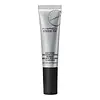What's inside
What's inside
 Key Ingredients
Key Ingredients

 Benefits
Benefits

 Concerns
Concerns

 Ingredients Side-by-side
Ingredients Side-by-side

Water
Skin ConditioningButylene Glycol
HumectantGlycerin
HumectantPEG-150 Distearate
EmulsifyingPolysorbate 80
EmulsifyingNiacinamide
SmoothingRosmarinus Officinalis Leaf Water
MaskingMelissa Officinalis Flower/Leaf/Stem Water
Skin ConditioningMentha Piperita Leaf Water
Skin ConditioningSodium Hyaluronate
HumectantSodium Ascorbyl Phosphate
AntioxidantMenthol
MaskingPentylene Glycol
Skin ConditioningPropylene Glycol
HumectantPEG-240/Hdi Copolymer Bis-Decyltetradeceth-20 Ether
StabilisingPEG-40 Hydrogenated Castor Oil
EmulsifyingPhenoxyethanol
PreservativeEthylhexylglycerin
Skin ConditioningCaprylyl Glycol
EmollientDisodium EDTA
Trideceth-9
Emulsifying1,2-Hexanediol
Skin ConditioningCI 42090
Cosmetic ColorantCI 19140
Cosmetic ColorantWater, Butylene Glycol, Glycerin, PEG-150 Distearate, Polysorbate 80, Niacinamide, Rosmarinus Officinalis Leaf Water, Melissa Officinalis Flower/Leaf/Stem Water, Mentha Piperita Leaf Water, Sodium Hyaluronate, Sodium Ascorbyl Phosphate, Menthol, Pentylene Glycol, Propylene Glycol, PEG-240/Hdi Copolymer Bis-Decyltetradeceth-20 Ether, PEG-40 Hydrogenated Castor Oil, Phenoxyethanol, Ethylhexylglycerin, Caprylyl Glycol, Disodium EDTA, Trideceth-9, 1,2-Hexanediol, CI 42090, CI 19140
Water
Skin ConditioningDimethicone
EmollientMethyl Trimethicone
Skin ConditioningVinyl Dimethicone/Methicone Silsesquioxane Crosspolymer
Dimethicone/Vinyl Dimethicone Crosspolymer
Skin ConditioningButylene Glycol
HumectantHamamelis Virginiana Water
AstringentCI 77220
Cosmetic ColorantIsononyl Isononanoate
EmollientAmmonium Acryloyldimethyltaurate/Vp Copolymer
Salix Nigra Bark Extract
Skin ProtectingLactobionic Acid
BufferingTocopheryl Acetate
AntioxidantSodium Hyaluronate
HumectantLaminaria Saccharina Extract
Skin ProtectingEcklonia Cava Extract
Skin ConditioningButyl Avocadate
Skin ConditioningPolyglyceryl-3 Disiloxane Dimethicone
Skin ConditioningPolyglyceryl-3 Polydimethylsiloxyethyl Dimethicone
Skin ConditioningEthylhexylglycerin
Skin ConditioningIsohexadecane
EmollientHydrolyzed Soy Protein
HumectantAcetyl Glucosamine
Skin ConditioningZinc PCA
HumectantPropanediol
SolventSodium Chloride
MaskingAcrylamide/Sodium Acryloyldimethyltaurate Copolymer
Emulsion StabilisingSynthetic Fluorphlogopite
Hydroxyapatite
AbrasiveSilica
AbrasiveNylon-12
Polysorbate 80
EmulsifyingLauryl Methacrylate/Glycol Dimethacrylate Crosspolymer
Coconut Acid
CleansingSalicylic Acid
MaskingParfum
MaskingBHT
AntioxidantTocopherol
AntioxidantPhenoxyethanol
PreservativeBenzoic Acid
MaskingZinc Oxide
Cosmetic ColorantWater, Dimethicone, Methyl Trimethicone, Vinyl Dimethicone/Methicone Silsesquioxane Crosspolymer, Dimethicone/Vinyl Dimethicone Crosspolymer, Butylene Glycol, Hamamelis Virginiana Water, CI 77220, Isononyl Isononanoate, Ammonium Acryloyldimethyltaurate/Vp Copolymer, Salix Nigra Bark Extract, Lactobionic Acid, Tocopheryl Acetate, Sodium Hyaluronate, Laminaria Saccharina Extract, Ecklonia Cava Extract, Butyl Avocadate, Polyglyceryl-3 Disiloxane Dimethicone, Polyglyceryl-3 Polydimethylsiloxyethyl Dimethicone, Ethylhexylglycerin, Isohexadecane, Hydrolyzed Soy Protein, Acetyl Glucosamine, Zinc PCA, Propanediol, Sodium Chloride, Acrylamide/Sodium Acryloyldimethyltaurate Copolymer, Synthetic Fluorphlogopite, Hydroxyapatite, Silica, Nylon-12, Polysorbate 80, Lauryl Methacrylate/Glycol Dimethacrylate Crosspolymer, Coconut Acid, Salicylic Acid, Parfum, BHT, Tocopherol, Phenoxyethanol, Benzoic Acid, Zinc Oxide
 Reviews
Reviews

Ingredients Explained
These ingredients are found in both products.
Ingredients higher up in an ingredient list are typically present in a larger amount.
Butylene Glycol (or BG) is used within cosmetic products for a few different reasons:
Overall, Butylene Glycol is a safe and well-rounded ingredient that works well with other ingredients.
Though this ingredient works well with most skin types, some people with sensitive skin may experience a reaction such as allergic rashes, closed comedones, or itchiness.
Learn more about Butylene GlycolEthylhexylglycerin (we can't pronounce this either) is commonly used as a preservative and skin softener. It is derived from glyceryl.
You might see Ethylhexylglycerin often paired with other preservatives such as phenoxyethanol. Ethylhexylglycerin has been found to increase the effectiveness of these other preservatives.
Phenoxyethanol is a preservative that has germicide, antimicrobial, and aromatic properties. Studies show that phenoxyethanol can prevent microbial growth. By itself, it has a scent that is similar to that of a rose.
It's often used in formulations along with Caprylyl Glycol to preserve the shelf life of products.
Polysorbate 80 is a surfactant and emulsifier. It is used to keep ingredients together, and prevent oils and waters from separating.
It is made from polyethoxylated sorbitan and oleic acid. This ingredient can be found in cosmetics, foods, and medicine. It is water-soluble.
Polysorbate 80 may not be fungal acne safe.
Learn more about Polysorbate 80Sodium Hyaluronate is hyaluronic acid's salt form. It is commonly derived from the sodium salt of hyaluronic acid.
Like hyaluronic acid, it is great at holding water and acts as a humectant. This makes it a great skin hydrating ingredient.
Sodium Hyaluronate is naturally occurring in our bodies and is mostly found in eye fluid and joints.
These are some other common types of Hyaluronic Acid:
Learn more about Sodium HyaluronateWater. It's the most common cosmetic ingredient of all. You'll usually see it at the top of ingredient lists, meaning that it makes up the largest part of the product.
So why is it so popular? Water most often acts as a solvent - this means that it helps dissolve other ingredients into the formulation.
You'll also recognize water as that liquid we all need to stay alive. If you see this, drink a glass of water. Stay hydrated!
Learn more about Water